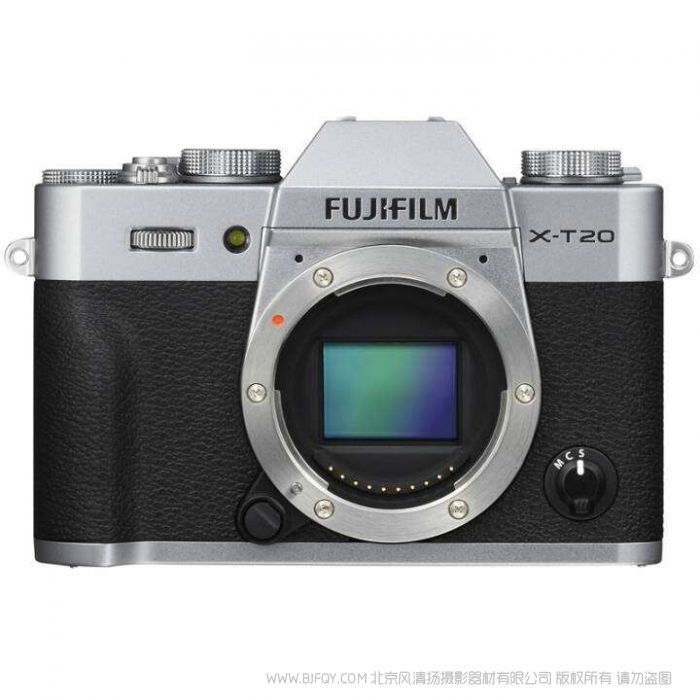富士:为了未来GFX必须变得更小更便宜 Fujifilm Manager: GFX Triumph and Full Frame Attack Strategy, Shrinking IBIS, AI Future, Fuji X-H2 Needs Breakthrough, COVID and
近日Imaging-resource对富士胶片进行了专访,此次包括飯田年久进行了漫长而有趣的采访。

采访总结如下:
新冠肺炎(COVID-19:):
COVID19:现在一切恢复正常。中国工厂在2月关闭了2周,菲律宾的工厂在4月关闭了
由于零售店关闭,4月是销售较糟糕的月份,现在正在缓慢恢复
由于推出了X-T4和X100V,富士的表现优于市场趋势
对X-T4的需求非常强劲
在2020年,需求可能不会回到去年的水平
当富士公司提交其财务报告时,影像部门的报告中有“电子成像”部分,这几乎是100%的数码相机和可换镜头
总体而言,影像领域的利润仍然相对不错
CIPA预测今年相机行业将进一步下降20%,但富士认为这太悲观了
富士专注于高端产品,因此跌幅不会那么糟糕
GFX100的销售量远高于富士公司的预期,并且X-T3需求强劲
富士胶片忽略了全画幅,这使其与其他所有公司都不一样
富士没有做每个人都做的事,而是走了一条不同的道路
GFX胜利与策略
顶级全画幅相机的价格在3,000-5,000美元之间。富士胶片针对这些客户扩大客户群
在该价格点,人们可以选择全画幅或升级到中画幅的GFX
由于法兰距不同,XF镜头无法兼容GFX相机
您可以使用智能AF适配器将数码单反相机镜头兼容GFX相机
GFX的客户中有70-80%来自非富士用户。较有可能来自全画幅数码单反相机用户
GFX 50R面向街头摄影师。 GFX 100是更严肃或更专业的摄影师,用于时尚,商业,时尚肖像等领域拍摄
博物馆和图书馆中出于存档目的对GFX相机的需求也很高
富士 GFX100是目前较畅销的GFX相机。 GFX50R接近GFX100的销量。 GFX50S的销售额占GFX50R的一半。
GFX的销量比预期高50%
GFX镜头机身比率:每1个GFX相机约3个镜头
富士X系统的镜头机身比率比GFX系统低
GFX系统对于富士来说确实是一个好生意
中画幅外观令全画幅客户震惊:3D感觉,更高的分辨率,动态范围,无法解析一亿像素的镜头
GFX是较适合图像质量
尺寸,重量,价格...富士胶片正在研究如何使中画幅画质更具吸引力和逼真度,作为客户的选择
GFX50R的成功之处在于其较小的尺寸
但是富士希望GFX100能成为完美的GFX相机,因此将IBIS放入其中以实现较佳可用性,从而使相机更大
对于GFX100用户,可移动性不如可用性重要(例如,借助IBIS,手持1亿像素拍摄)
为了未来,GFX必须变得更小,更便宜
AI / IBIS /新款X-T4快门
富士正在研究AI如何帮助未来的拍照
当前的处理器功能不足以应付AI,但富士认为将来它将包含在相机中
X-T4和X-H1中的IBIS可以与镜头OIS配合使用
但是对于GFX 100,没有协同防抖功能,因为OIS可以提供几乎所有的稳定性能
X-T4上的IBIS可以超过镜头的OIS性能,因此X-T4上实现较高6.5档防抖
有些镜头的成像圈较大,因此IBIS单元可以进一步移动以稳定图像。
为了缩小IBIS,富士卸下了所有3个螺旋弹簧,并用磁铁代替了它们。
X-H1有六个磁铁。三个用于感应,三个用于移动位置。 X-T4只有三个磁铁可以同时完成这两项工作
得益于新的陀螺仪传感器,这使IBIS缩小了30%,重量减轻了20%,精度提高了8倍(振动检测精度比X-H1高出8倍,即使在成像圈边缘也可以校正模糊)
当前的IBIS单元对于X-Pro机身仍然太大了
X-T4令人印象深刻的300,000次驱动归功于:新型无芯DC电动机,可快速启动和停止,并提供更大的扭矩。富士更改了注入模具的位置,以提高刚性。新设计的弹簧吸收冲击
富士X-H2
富士胶片继续“调研未来的X-H相机”
X-T和X-H是两条明显不同的线。有什么区别? “现在很难说;我们可能需要某种突破。”
X-H2不能成为拥有更好握持手感的X-T4,“我们必须要有更多革命性的东西。”
X-H2将是新技术引入产品线的部分
取消D-Pad和混合
有些相机没有D-Pad,以免造成误操作
X-Pro3具有隐藏式翻转LCD,与X-T4的区别更多
镜头
与XF镜头阵容相比,GF需要的镜头数量更少 ,因为使用XF时,例如,我们需要大的远摄变焦镜头才能满足运动摄影师的需求
XF33mmF1.0太大。 富士胶片选择推出XF50mmF1.0,它的散景也比XF33mmF1.0大得多。
固件
X-T4具有电子图像稳定功能。 较旧的富士相机无法通过固件更新获得它,因为它可能需要仅在X-T4上安装的新型陀螺仪传感器
Imaging-resource published a long and very interesting interview with various Fujifilm managers, including Toshihisa Iida).
Here is a summary:
COVID-19:
- COVID: all back to normal now. Chinese factory was closed for 2 weeks in February and the factory in the Philippines was closed in April
- due to closed retail shops, April was the worst month in terms of sales, now slowly recovering
- Fujifilm did better than the market trend, due to Fujfilm X-T4 and X100V launch
- demand for X-T4 is very strong
- in 2020, probably demand will not go back to the same level as last year
- when Fuji presents its fiscal reports, in the imaging division report there is the section “Electronic imaging” and this is almost 100% digital cameras and interchangeable lenses
- overall for the imaging segment, the profit is still relatively OK
- CIPA predicts a further 20% drop this year for the camera industry, but Fujifilm thinks that is too pessimistic
- Fujifilm focuses on high end devices and hence the drop should not be as bad
- GFX100 sales much higher than Fuji predicted and X-T3 demand is strong
- Fujifilm ignores Full Frame, which makes them different to all other companies
- instead of doing what everybody does, Fujifilm went a different path
GFX Triumph and Strategy
- top full frame cameras are priced around $3,000-5,000. Fujifilm targets those customers to expand customer base
- at that price point, people can choose full frame or upgrade to medium format GFX
- as flange distance is different, XF lenses can’t be adapted to GFX cameras
- you can adapt DSLR lenses to Fujifilm GFX with smart autofocus adapters
- 70-80% of GFX customers were coming from non-Fuji cameras. Most probably from full frame DSLR cameras
- GFX 50R targets street photographers. GFX 100 is more serious or professional photographers: Fashion, commercial, fashion portrait…
- high requests for GFX cameras also among museums and libraries for archival purpose
- Fujifilm GFX100 is currently the best selling GFX camera. GFX50R is close to GFX100 sales. GFX50S sees half the sales of GFX50R.
- GFX sells 50% better than they predicted
- GFX lens attachment rate: about 3 lenses per 1 GFX camera
- Fujifilm X system has a lower lens attachment rate than GFX system
- GFX system is really good business for Fujifilm
- the medium format look is striking to full-frame customers: 3D-feel, higher resolution, dynamic range, lenses than can resolve 100MP
- GFX is best for image quality
- size, weight, price… Fujifilm is looking on how to make medium-format attractive and realistic as a choice for customers
- the success with the GFX50R was its smaller size
- But with GFX100 Fujifilm wanted to make the perfect GFX camera, hence put IBIS into it for best usability, which made the camera bigger
- for GFX100 users portability is not as important as usability (for example handheld 100MP shooting thanks to IBIS)
- for the future, GFX has to become smaller and cheaper
AI / IBIS / new X-T4 shutter
- Fujifilm is investigating what AI can do to help future picture-taking
- current processor is not powerful enough to deal with AI, but Fujifilm thinks it will be included in cameras in the future
- IBIS in X-T4 and X-H1 can cooperate with the lens OIS
- But for the GFX 100 Fujifilm doesn’t have the cooperative stabilization because OIS can deliver almost all the stabilization performance
- the IBIS on X-T4 can exceed the OIS performance of the lens, hence up to 6.5 stops stabilization on X-T4
- Some lenses have a big image circle, so the IBIS unit can move further to stabilize the image.
- in order to make IBIS smaller, Fujifilm removed all 3 coil springs and replaced them with magnets
- X-H1 has six magnets. Three for sensing, and three for moving position. X-T4 has only three magnets doing both jobs
- this made IBIS 30% smaller and 20% lighter as well as 8 times more accurate thanks to a new gyro sensor (8x more detection accuracy of vibration than X-H1, making it possible to correct blur even at the edge of the image circle)
- current IBIS unit still too big for X-Pro body
- X-T4 impressive 300,000 actuations thanks to: new coreless DC motor for quick starting and stopping and more torque. Fuji changed the position of the injection into the mold for more rigidity. Newly-designed spring to absorb the shock
Fujifilm X-H2
- Fujifilm continues to “investigate future X-H cameras”
- X-T and X-H are two clearly different lines. What is the difference? “Difficult to say now; we need some sort of the breakthrough, probably.”
- it’s not enough for the X-H2 to be an X-T4 with bigger grip, “we have to have something more revolutionary.”
- X-H2 is where new technology will enter the product line
D-Pad removal & mixed
- some cameras have no D-Pad to avoid misoperating
- X-Pro3 has hidden tilt LCD to differenciate more from X-T4
Lenses
- GF requires a smaller number of lenses compared to the XF lens lineup, because with the XF we need big telephoto zooms, for example, to meet the demand for sports photographers
- XF33mmF1.0 was too big. Fujifilm went for the XF50mmF1.0, which also has much more beautiful bokeh than the XF33mmF1.0
Firmware
- X-T4 has digital image stabilization. Older Fuji cameras won’t get it via firmware update, because it probably requires the new gyro sensor present only on the X-T4
 风清扬官方微信
风清扬官方微信
 感恩支持
感恩支持
